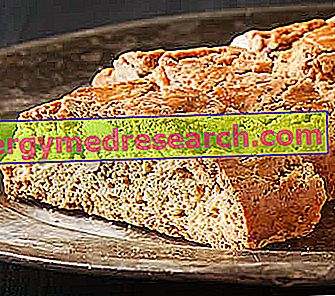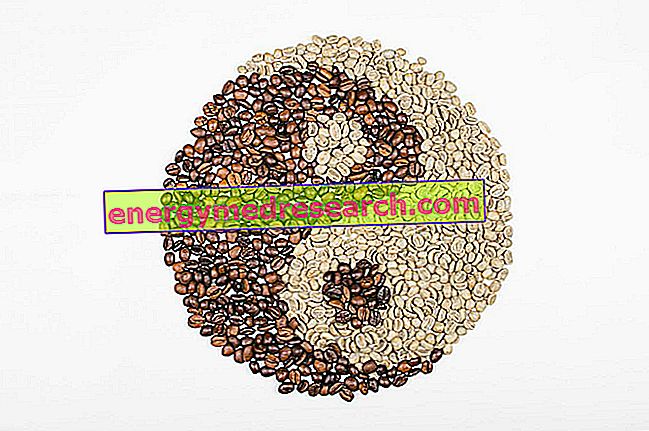Generality
Cantucci - also known as cantuccini or biscotti of Prato - are traditional dry sweets, typical of the province of Prato (Tuscany). In Umbria and Lazio they are called by the nickname " tozzetti ".

This processing method makes the nooks typically dry, hard and long-lasting.
Cantucci mainly contain wheat flour, butter, eggs, almonds, sugar, liqueur and spices (cardamom, cinnamon, cloves, star anise).
The cantuccini are typically consumed with Vin Santo, a fortified wine in which it is used to soak them.
The cantucci enjoy the recognition of Traditional Italian Agri-food Product (PAT).
Nutritional Features
Cantucci have a high energy supply, supplied mainly by carbohydrates, followed by lipids and finally by proteins.
Fatty acids are mainly unsaturated, complex carbohydrates (even if the ratio between starch and soluble sugars is almost 1: 1) and proteins of medium biological value.
There is no detailed nutritional information on the intake of vitamins and minerals.
Cantucci are not foodstuffs suitable for frequent consumption and / or in significant portions. They are especially contraindicated for overweight subjects and those suffering from hyperglycemia or type 2 diabetes mellitus and hypertriglyceridemia.
For the gluten content, the cantucci do not lend themselves to the diet against celiac disease.
They do not include milk and can be added to the lactose intolerant diet.
Cantucci are tolerated by the vegetarian lacto-ovo philosophy but not by the vegan one.
Using them as a breakfast or snack food, the average portion is 4-5 pieces, corresponding to 20-25 g, or 90-110 kcal.
To consult the "alternative dietary" recipe proposed by Alice (without butter, therefore with less cholesterol, saturated fats and calories) we recommend you click here.
Cantucci Biscuits Without Butter
X Problems with video playback? Reload from YouTube Go to Video Page Go to Video Recipes Section Watch the video on youtube | ||
| Edible part | 100.0% | |
| Protein | 9, 6g | |
| Lipids TOT | 14, 4g | |
| Saturated fatty acids | 1, 90g | |
| Monounsaturated fatty acids | - g | |
| Polyunsaturated fatty acids | - g | |
| Cholesterol | 17, 0mg | |
| TOT Carbohydrates | 66, 5g | |
| Soluble sugars | 31, 0g | |
| Dietary fiber | 2, 7g | |
| Power | 440, 0kcal | |
| Sodium | 15, 0mg | |
Homemade Short Recipe
Ingredients
180 g sugar, 1 egg, 1 egg yolk, 265 g 00 flour, 110 g almonds, 30 g butter, 10 g of vin santo or marsala, 0.5 g ammonia for cakes, 1 pinch salt, QB aromas.
Method
In a bowl, combine and mix the eggs with the sugar. In another bowl, sift the flour, ammonia and salt.
Soften the butter and add it to the eggs with the sugar together with the powders; mix until dough is obtained. Then add the almonds, the vin santo, the aromas and mix.
Form two loaves as long as the baking tray, on which they are placed. Brush them with the yolk. Bake in a hot oven at 200 ° C for 20 minutes.
Remove from the oven, leave to cool and cut the two loaves into diagonal slices 1-2 cm thick.
Place the slices again on the baking sheet and bake again at 160 ° C for 18 minutes.
Remove from the oven and leave to cool in a dry, airy place.
Background
In the past, the most renowned cantucci were made in the city of Pisa.
The first historical literary trace of the cantucci was reported in the dictionary of the Accademia della Crusca and dates back to the 17th century.
The initial recipe (Genovese style) was included in a manuscript by Amadio Baldanzim, dating back to the seventeenth century. In this document the biscuits are called Genoese.
The initial recipe (from 1600) was devoid of almonds, which were included in a variant called "biscottelli" only two centuries later.
The last recipe, which became classic, was invented by Antonio Mattei in the 19th century.



